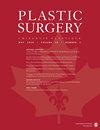先前经桡骨置管对前臂桡骨游离皮瓣的影响
IF 0.6
4区 医学
Q Medicine
引用次数: 0
摘要
桡骨前臂游离皮瓣(RFFF)是重建各种软组织缺损的通用选择,在头颈部手术中尤其常见。RFFF的优点包括相对较短的手术时间,较长的蒂,更薄,更柔韧的皮瓣。然而,除了在重建手术中发挥作用外,桡动脉还可用于许多其他手术,包括冠状动脉造影和经皮冠状动脉介入治疗。先前的担忧是,先前的导管置入可能有害地影响桡动脉的功能,在心胸外科领域,越来越多的人建议在这种情况下,不要将其作为冠状动脉搭桥手术的移植物。尽管如此,人们对RFFF的影响知之甚少。在这篇综述文章中,我们简要地考虑了先前经桡动脉导管置入对桡动脉影响的现有证据,并讨论了重建手术的意义。然后,我们总结了在当前实践中使用它们的关键考虑因素。本文章由计算机程序翻译,如有差异,请以英文原文为准。
The Effect of Previous Transradial Catheterization on Radial Forearm Free Flaps
Radial forearm free flaps (RFFF) are a versatile option for the reconstruction of a wide variety of soft tissue defects and are particularly common in head and neck surgery. Benefits of RFFF include a relatively short operating time, a long pedicle, and a thinner, more pliable flap. However, in addition to its role in reconstructive surgery, the radial artery may be utilized for a number of other procedures including coronary angiography and percutaneous coronary interventions. Concern has previously been raised that prior catheterization may deleteriously affect the function of the radial artery and in the field of cardiothoracic surgery, individuals are increasingly advising against its use as a graft for coronary artery bypass graft surgery in such circumstances. Despite this, little is known about the effect on RFFF. In this review article, we concisely consider the available evidence of the effect of previous transradial catheterization on the radial artery and discuss the implications for reconstructive surgery. We then summarize the key considerations regarding their use in current practice.
求助全文
通过发布文献求助,成功后即可免费获取论文全文。
去求助
来源期刊

Plastic Surgery
SURGERY-
CiteScore
0.67
自引率
0.00%
发文量
0
审稿时长
6-12 weeks
期刊介绍:
Plastic Surgery (Chirurgie Plastique) is the official journal of the Canadian Society of Plastic Surgeons, the Canadian Society for Aesthetic Plastic Surgery, Group for the Advancement of Microsurgery, and the Canadian Society for Surgery of the Hand. It serves as a major venue for Canadian research, society guidelines, and continuing medical education.
 求助内容:
求助内容: 应助结果提醒方式:
应助结果提醒方式:


